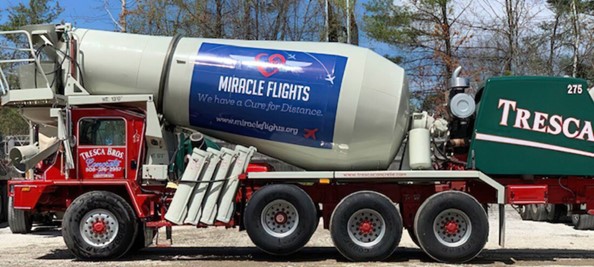
In today’s competitive business landscape, companies are increasingly recognizing the power of supporting charitable causes as a strategic way to enhance their brand reputation and foster unwavering customer loyalty. One such company leading by example is Tresca Brothers Concrete, a renowned name in its industry that is known for its commitment to giving back to the community.
In the following article, we delve into the profound impact of corporate philanthropy on building a positive brand image and forging long-lasting connections with customers. Discover how these trailblazing businesses are redefining success by making a meaningful difference in the lives of others while strengthening their position as industry leaders.
In terms of mindshare, it’s hard to beat TOMS shoes when it comes to corporate social responsibility. The company gave away their first shoe in 2006, and 14 years later they had given away 100 million pairs of shoes. Since 2021, TOMS has been giving away ⅓ of their profits to support organizations like Save the Children, incorporating health and education for a more holistic philanthropic strategy.
So, how does this translate to customer loyalty and brand reputation? The answer is cause-sumption.
Millennials Put Money Where Their Heart Is
Cause-sumption can described with the fact that “…customers are more likely to choose to buy from one brand over another based on the brand’s support of a cause they care about.” Forbes states that 81% of millennials are likely to adhere to cause-sumption, which is significant because they were the largest group of consumers in the U.S. in 2022.
When a consumer is aware that their purchase is part of a charitable cause, their purchase feels special. The consumer then feels a sense of pride, which spurs on more buying.
While giving to charity is simply “the right thing to do,” there is often more to it than that. By employing a strategy loyalty program, a company can effectively appeal to a wider range of customers, incite lifelong brand loyalty, and do some good along the way.
Not only that, supporting a cause can turn regular consumers into advocates, promoting a brand through word-of-mouth simply because it aligns strongly with their identity and values.

The Power of Word-of-Mouth Advertising
Dubbed as the most powerful form of marketing, word-of-mouth marketing leverages the psychological effect of “Social Proof,” or the bias that the majority knows best. When consumers are purchasing something, the decision-making process is heavily influenced by opinions from trusted sources like friends, family, and even complete strangers, through reviews.
In the age of social media, online reviews are the digital form of word-of-mouth marketing. According to a May 2022 Forbes article, 90% of people gain confidence in a brand that was recommended to them, even if it was from a stranger.
Oftentimes, word-of-mouth happens organically when a business provides a memorable customer experience. On top of that, if the customer resonates with the cause that a business supports, it creates a deeper connection, making them more likely to recommend it to their social network.
Simply put, providing good business results in satisfied customers, which can result in repeat purchases and the occasional recommendation. A good business behind a good cause can even breed brand champions, those who advocate a brand because, in addition to their positive experience, it occupies a special place in their heart.
The goal of a business is to make money, and at the heart of things, stories sell.
The Bottom Line
A business’ overall goals should tie into their giving goals–it should be part of the business’ story.
More than just articulating words, stories convey emotion and purpose. The right story can drive people to feel the need to act, supporting a brand as they try to make the world a better place.

